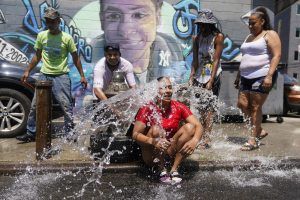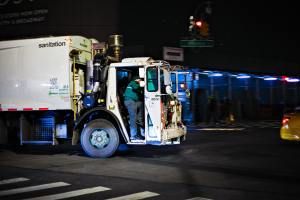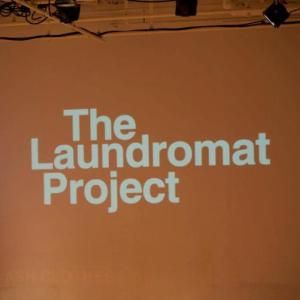Yankees pick up momentum with wins out West

The Yankees continue to play winning baseball with a positive six-game West Coast road trip, taking four from the Seattle Mariners and Los Angeles Dodgers before returning to the Bronx to begin a six-game home stand. They opened it on Tuesday against the Chicago White Sox. The series ends tonight and the Boston Red Sox will be in town starting tomorrow for a weekend three-game set.
The Yankees took 10-4 and 10-2 victories from the Mariners on May 29 and May 30 respectively, followed by taking down the Dodgers 6-3 on Saturday and 4-1 on Sunday after dropping the first game of the series last Friday 8-4. They were 36-25 before facing the White Sox on Tuesday, the fifth-best record in Major League Baseball, but only good enough for third place in the American League East division, arguably the toughest. The first-place Tampa Bay Rays had the best record in MLB at 43-19 and the second-place Baltimore Orioles were 37-22, the third-best overall mark in the league.
The Yankees saw the return of outfielder/designated hitter Giancarlos Stanton and third base player Josh Donaldson from the injured list. Both came back in the Dodgers series. Stanton had been out since April 15 with a strained hamstring and Donaldson shelved since April 5, also with a hamstring strain. Donaldson immediately made his presence felt, hitting two homers in the Yankees’ 8-4 loss last Friday. Stanton also homered and had a walk in his first action in almost seven weeks.
RELATED: Aaron Judge’s power fuels Yankees’ surge
With the two sluggers adding a lift to the lineup, last year’s AL MVP Aaron Judge injured his right big toe in crashing into the Dodgers’ outfield wall on Saturday. He missed Sunday’s and Tuesday’s games, awaiting results with the possibility of a trip to the IL.
“I really don’t care at this point,” said the frustrated star. “If I’m on it, I’m on it.”
The week started with Judge second in MLB with 19 homers. Starting centerfielder Harrison Bader was placed on the 10-day injured list on May 30 with a hamstring strain and starting pitcher Nestor Cortes is expected to be out of the rotation for perhaps the next two weeks or more with a left shoulder injury. The 2022 All-Star is having a subpar season posting a 5-2 record with a 5.16 ERA in 11 starts.
Meanwhile, after winning three in a row against the Philadelphia Phillies May 30 through June 1, the Mets were swept by the Toronto Blue Jays last weekend. On Monday, the Mets designated Catcher Tomas Nido for assignment and activated catcher Omar Narvaez, who will slot in as the backup catcher to Francisco Alvarez.
The Mets were 30-30 and in third place in the NL East behind the 35-24 Atlanta Braves and 33-28 Miami Marlins when they opened a three-game road series versus the Braves on Tuesday. They will be in Pittsburgh to play the Pirates, with Game 1 taking place tomorrow. Kodai Senga (5-3 3.75 ERA) will be on the mound for the Mets, who are back home at Citi Field to meet the Yankees next Tuesday and Wednesday.
The post Yankees pick up momentum with wins out West appeared first on New York Amsterdam News.
4 Common Summer Fashion Problems And How To Fix Them
The #1 source in the world for all things Harlem.
By HWM Partnership Summer is an ideal time to showcase your style, as you can strip back the warm layers and embrace color, prints, and many silhouettes. Yet, dressing for hot temperatures might not always feel easy or comfortable, and you might feel tempted to settle for thicker, longer, or more restrictive outfits that do…
The post 4 Common Summer Fashion Problems And How To Fix Them appeared first on Harlem World Magazine.
Hotter, faster, stronger: Heat island effect endangers New Yorkers




Every year, as temperatures soar during the scorching summer months, the searing heat experienced in New York City is increasingly exacerbated by climate change and will also be amplified by another factor: the city itself.
The city’s densely packed buildings and dark pavement absorb and radiate heat from the sun, trapping heat and making the city feel like an oven. This phenomenon is known as the “heat island effect,” and our concrete jungle is the third-most intense heat island in the U.S., behind only Newark, N.J., and New Orleans, Louisiana.
“New York is definitely one of the epicenters for heat,” said Vivek Shandas, professor of climate adaptation and founder and director of the Sustaining Urban Places Research Lab at Portland State University. “Unfortunately, what we’ve done in our cities is really build them out so much that we’ve eliminated a lot of the green space and trees…and very disproportionately.”
This phenomenon has an impact on some parts of the city more than others. Here’s why it’s important to understand to stay safe this summer.

Why is the heat island effect dangerous?
Rising temperatures due to climate change are creating conditions for more extreme floods, hurricanes, and storms, but extreme heat is the deadliest of them. On average, more than 67,000 people in the United States end up in emergency rooms every year due to heat-related health issues.
In New York City, the number of emergency room visits for heat have gone back up since they dipped in the summer of 2020. There were 370 heat-exacerbated fatalities in the city in 2021, according to the New York City Department of Health and Mental Hygiene (DOHMH).
Heat mortality rates are more than twice as high among Black New Yorkers, who, alongside poor and marginalized communities, tend to experience record high temperatures in their neighborhoods and the least shielding from heat. Even though more than 90% of New Yorkers have air conditioning, 81% of people dying from extreme heat have no A/C at home.
“It’s gotten to a point where it’s actually killing more people every year,” Shandas said. “And it’s often…Black and brown communities, older communities, communities that have been historically more marginalized that are facing the brunt of the impacts from urban heat.”
Mapping the hottest neighborhoods
Trapped heat is made worse by a lack of trees and greenery, and building designs that restrict air flow, creating neighborhoods with hot and stagnant air.
High disinvestment in neighborhoods like Harlem, Hunts Point, and East Flatbush—linked to historical practices like redlining and redirecting public infrastructure resources to wealthier neighborhoods—intensifies the heat island effect in those areas.
In 2021, Harlem was nearly 10 degrees hotter than other neighborhoods surrounding Central Park. To make matters worse, the density of cooling centers—designated public facilities like libraries and senior centers that were open during heat emergencies for New Yorkers to cool down—is lower in some of the most heat-vulnerable neighborhoods.
Last summer, Shandas and a team at the New York Environmental Justice Alliance worked on a project to measure air temperatures all around New York, expanding on a project from the previous year focused on the Bronx. Community volunteers fanned across the city on foot and on bicycles, collecting up-to-the-minute temperature changes in different neighborhoods of the city.
“We were able to show, at very high resolution, how areas that have been historically kind of disinvested,” Shandas said. He said their research found that Harlem and the Bronx were consistently 10 degrees higher than some highly built-out areas in lower Manhattan.
Solutions that beat the heat
The U.S. Environmental Protection Agency (EPA) recommends a few approaches to combat heat island effect: creating rooftop gardens, painting roofs in light colors, and putting cool pavements on the street that reflect the heat.
Trees play a critical role in mitigating the effect. A European study recently published in the Lancet found that 30% of deaths caused by the heat island effect could be prevented with more tree cover. Trees provide shade that can significantly decrease temperatures and release water into the atmosphere, cooling the air. Shandas called trees “the original air conditioning systems” for society.
Trees also offer energy-saving benefits, such as lowering electric bills and preventing the evaporation of harmful organic compounds from gas tanks in shaded parking lots. Every year, through June 30, New York City residents can apply to have a tree planted on their street. But as resilient as trees are, they require lots of care—pruning, watering—to thrive and provide those cooling benefits in cities.
Despite new federal investment in environmental justice remedies, lots of neighborhood cooling efforts rely on community members volunteering their time to bring about these changes and check in on their neighbors.

Staying cool this summer
To stay safe during the summer, it is important to recognize the symptoms of heat-related illnesses and take prompt action.
Heat stress is the mildest form of heat-related illness and typically presents with symptoms such as heavy sweating, fatigue, muscle cramps, dizziness, and headache. If not addressed, it can progress to heat exhaustion, characterized by increased body temperature, rapid heartbeat, nausea, weakness, and clammy skin. Heat exhaustion requires immediate attention to prevent it from advancing to heat stroke.
“I always people tell that heat distress can happen in the young and old, and sometimes it comes on very quickly and you’re in the middle before you realize it,” said Lauren Smalls-Mantey, a senior environmental systems scientist studying extreme heat for the New York City Department of Health and Mental Hygiene (DOHMH).
Even when temperatures drop at night, prolonged periods of hot weather can still cause heat distress, Smalls-Mantey added. This is because the body hasn’t had a chance to recover from high daytime temperatures. At night, indoor temperatures in homes without A/C “can be higher than the outdoor temperature because buildings tend to retain heat after prolonged periods of hot weather,” she said.
The CDC recommends staying hydrated by drinking water regularly, especially in hot weather or when engaging in physical activities. Wearing lightweight, loose-fitting, and breathable clothing, and avoiding direct sun exposure during peak hours in the early afternoons is best for the hotter summer days. Take frequent breaks in shaded or air-conditioned areas and be mindful of the signs of heat-related illness in oneself and others.
Prevention is key to avoiding getting sick in the heat. If staying cool at home isn’t possible during a heat emergency, call 311 to find the nearest cooling center.
“When you see these heat warnings, pay attention and be careful,” said Smalls-Mantey. “Hydrate, make sure you know your options.”
The federally funded, state-administered Home Energy Assistance Program (HEAP) of the New York City Human Resources Administration (HRA) provides a limited number of air conditioning units on a first-come, first-served basis as part of the summer Cooling Assistance Component. Eligible low-income residents can apply online or in person at one of HRA’s benefits access centers, which also can be found by calling 311.
Until enough adaptations are in place to create equitably cooler cities, climbing temperatures will continue to disrupt lives. Smalls-Mantey said that solving for extreme heat requires not just inter-agency cooperation and funding, but also community education to be effective.
“We have to do education toward heat safety,” she said.
The post Hotter, faster, stronger: Heat island effect endangers New Yorkers appeared first on New York Amsterdam News.
Here Are Some Events You Don’t Wanna Miss During Governors Ball Weekend
After a long wait, it’s finally Gov Ball weekend!
Governors Ball has three stages this year with a stacked lineup of performers, including Kendrick Lamar, Odesza, Lizzo, Ice Spice, Pinkpantheress, and more.
But aside from the main event in Queens from Friday to Sunday, Governors Ball has its own lineup of afterparties sponsored by Budlight, Gov Ball After Dark. The party series includes events hosted by numerous artists performing at the festival in Brooklyn, Queens, and Manhattan venues.
In addition to official Gov Ball events, there are others around the city that you won’t need a ticket for! (maybe just an RSVP)
Starting Thursday afternoon, you can catch cool Governors Ball-related activations by big brands to get you in the mood for all the shenanigans to come this weekend!
Here are some of the events we plan to hit this weekend:
1. BACARDÍ x Stadium Goods Speakeasy-Inspired Pop Up

BACARDÍ Rum and Stadium Goods will unveil the BACARDÍ x Stadium Goods SNEAK3ASY, a remix on the classic speakeasy with an immersive Caribbean-inspired cocktail oasis hidden within a new Stadium Goods storefront in SoHo. Free and open to the public for one day only, the event will appear to be a new Stadium Goods retail space stocked with limited-edition BACARDÍ x Stadium Goods merch and featuring cutting-edge Snapchat Mirrors.
WHEN: Thursday, June 8th from 2-7 PM ET
WHERE: 45 Grand Street, New York, NY 10013
2. D’USSÉ Hosts Gov Ball Festival Vending Machine Pop-Up with Privilege NYC

In partnership with a Japanese streetwear brand and storefront Privilege, D’USSE will be surprising New York City locals and festival goers alike with a bespoke machine that will be filled with custom, never-before-seen D’USSE festival survival gear that fans can retrieve for free in preparation for the show this weekend. Visitors can also score GA day passes to the festival and other exclusive surprises for this summer. Please note vending machine visitors are limited to 21+ and must be ready to show ID.
WHEN: Thursday, 6/8, 4-7 PM EST
WHERE: Privilege New York: 153 Essex St, New York, NY 10002
3. Get your dirty shoes cleaned for free at this Sneaker Spa pop-up 
IHG Hotels & Resorts is coming to the rescue this weekend as they present “IHG Hotels & Resorts’ Sneaker Spa”— a one-stop shop dedicated to reviving your festival-worn kicks. In collaboration with premium shoe care brand Jason Markk, the Sneaker Spa will offer 15-minute appointments using Jason Markk’s renowned products and professional cleaning crew to refresh your sneakers. You can also snag a complimentary shoe bag with Quick Wipes and a thoughtfully curated sneaker Care Kit, including trusted, eco-friendly products to protect your favorite sneakers throughout the festival season.
WHEN: Saturday, June 10th & Sunday, June 11th 9AM – 1PM EST
WHERE: Hotel Indigo Lower East Side New York, 171 Ludlow Street, New York, NY 10002
The post Here Are Some Events You Don’t Wanna Miss During Governors Ball Weekend appeared first on Secret NYC.
Harlem talks trash

Come out on June 13th at 7 p.m. to learn more about the Department of Sanitation’s institutional inequities that negatively impact sanitation services in East Harlem.
• New research on DSNY’s Litter Basket distribution will be presented
• Share your opinions on how to improve community cleanliness
Event takes place Tuesday, June 13th, at 7 p.m. in the Henry J. Carter Hospital’s Community Space at 1752 Park Ave (122nd Street and Park Avenue).
Sponsoring organizations include The Harlem Neighborhood Block Association, CIVITAS, 1775 Houses, Harlem East Block Association, and Community Board 11
The post Harlem talks trash appeared first on New York Amsterdam News.
Panel discussions on neighborhood concerns at Laundromat Project

The Bed-Stuy based Laundromat Project will be hosting a three-day free and open event called “Artists as Neighbors: Living Liberation.” The get-together will tackle issues like gentrification, activism, and preservation and look at how they are being dealt with in the community.
The event takes place between June 9 and June 11 at 1476 Fulton Street in Brooklyn, NY 11216. Registration is available at their website, laundromatproject.orgFor more information call 718-574-0798 or email info@laundromatproject.org.
The post Panel discussions on neighborhood concerns at Laundromat Project appeared first on New York Amsterdam News.




